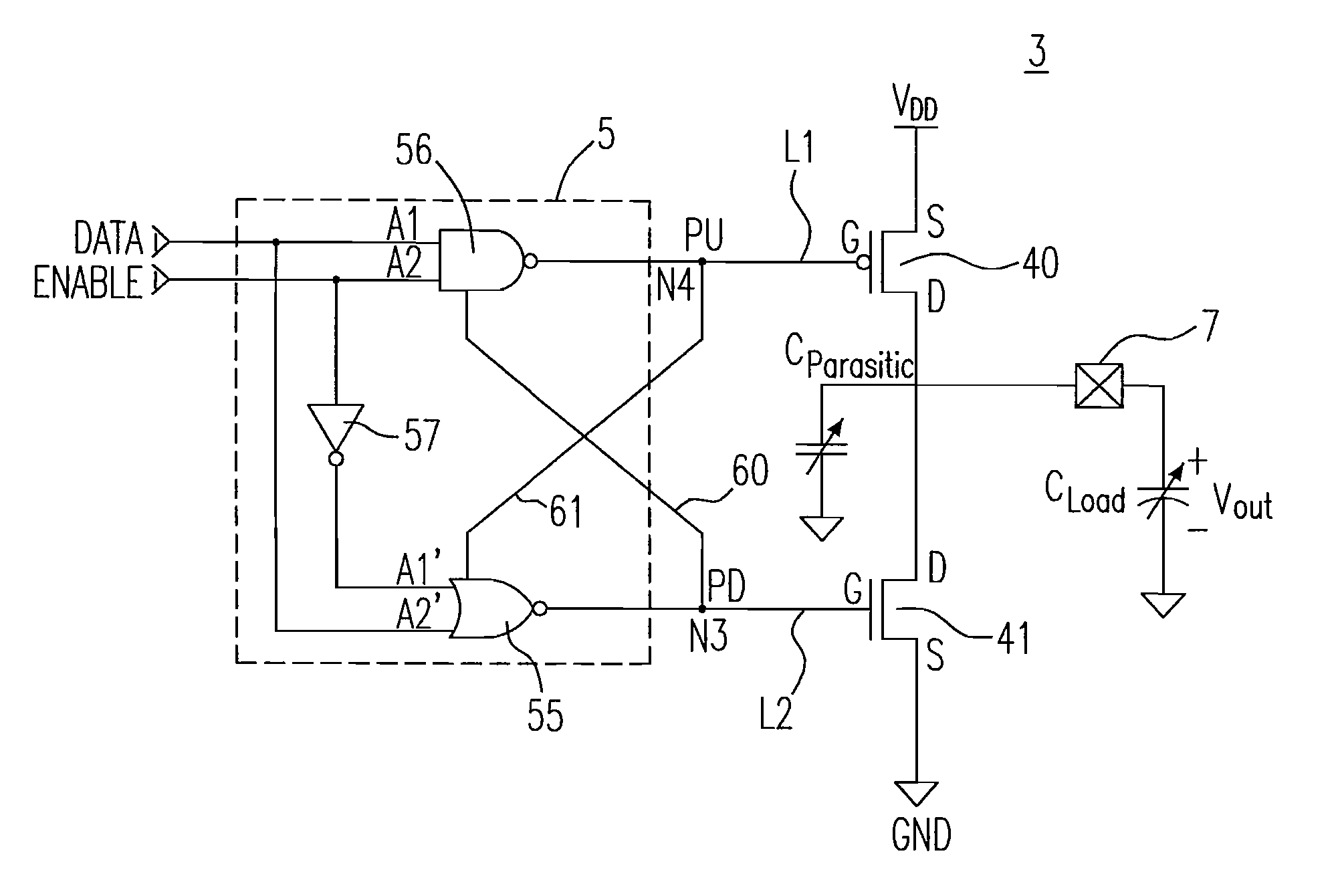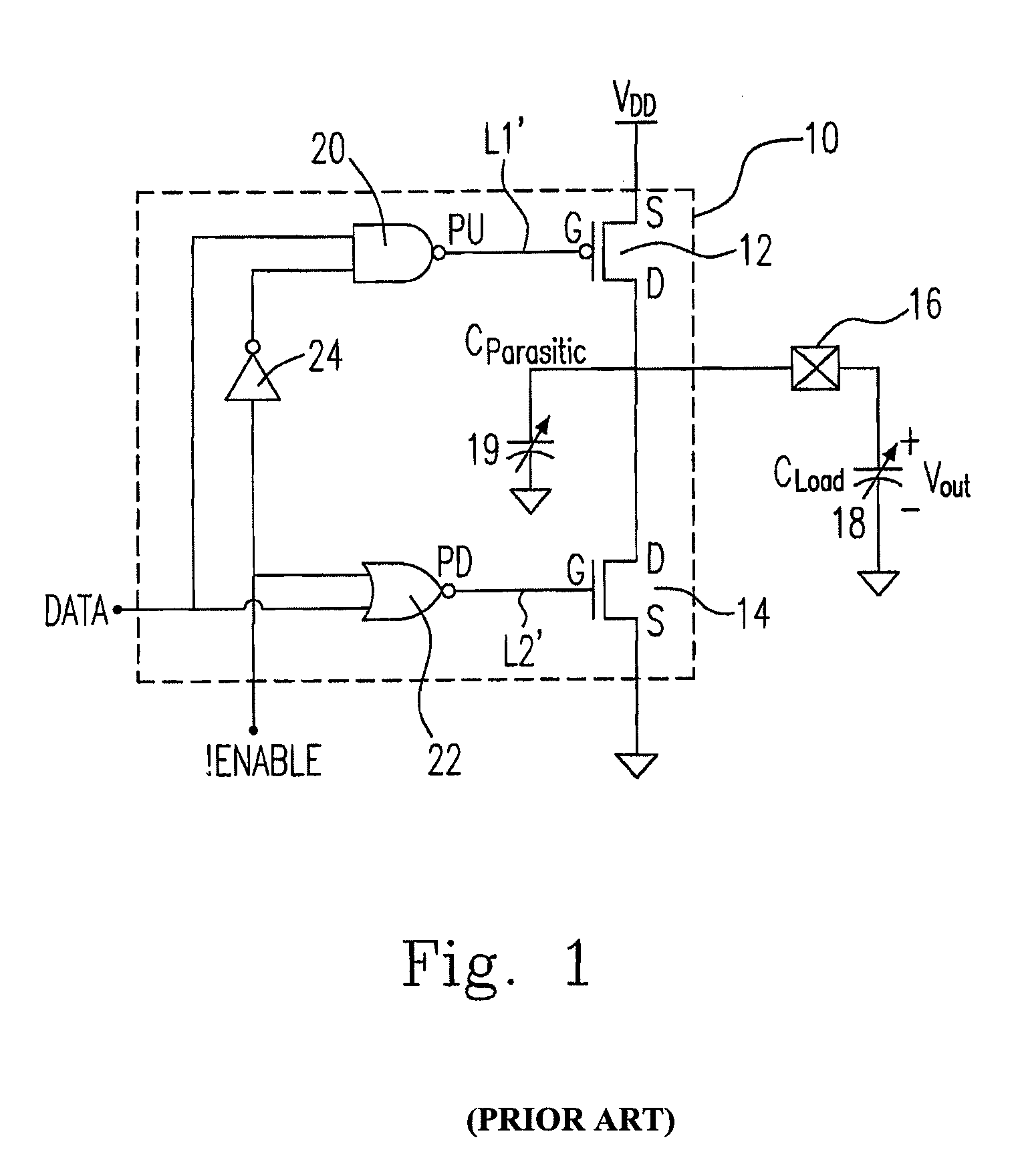Output buffer device
a buffer device and output technology, applied in the field of simple output buffers, can solve the problems of inability to operate logic gates, large di/dt effect, and prior art suffering from both short-circuit current and large di/dt effect, so as to reduce output signal ringing, reduce short-circuit current, and reduce the effect of short-circuit curren
- Summary
- Abstract
- Description
- Claims
- Application Information
AI Technical Summary
Benefits of technology
Problems solved by technology
Method used
Image
Examples
first embodiment
[0024]FIG. 2 shows a circuit of an output buffer according to a first embodiment of the invention, and the output buffer 3 includes an output stage 4 formed by a first switch 40 having a first control terminal 401 and a second switch 41 having a second control terminal 402, which are electrically connected in series between a supply line at a supply potential VDD and a ground line at a ground potential VGND. In fact, as is known, the first switch 40 is a PMOS transistor and the second switch 41 is an NMOS transistor, and a pre-driver 5, having a first output terminal L1 and a second output terminal L2 coupled to each gate terminal 401, 402 of the PMOS transistor 40 and the NMOS transistor 41, for respectively controlling each gate terminal 401, 402 of the PMOS transistor 40 and the NMOS transistor 41 in order to bring these transistors 40, and 41 to the turning-on threshold.
[0025]Next, in the detailed description from the accompanying FIG. 2, the output buffer 3 comprises a first wi...
second embodiment
[0050]The second embodiment shows that NAND / NOR gate in the pre-driver are buffered with inverter chain. Therefore, in FIG. 6, the pre-driver 5 further provides a first inverter 71, a second inverter-like gate 72, a third inverter 73 and a fourth inverter-like gate 74 to support a high driving capacity to an NAND gate 75 and an NOR gate 76 with large loading. Here, the pre-driver 5 comprises NAND gate and the NOR gates' VGND / VDD node coupled to VGND / VDD, however, the term second inverter-like gate 72 and fourth inverter-like gate 74 differ from typical inverters owing to their VGND / VDD node being not always coupled to VGND / VDD. Still, it is required to explain that the operation characteristics of second inverter-like gate 72 and fourth inverter-like gate 74 are identical to that of typical inverters.
[0051]Referring to FIG. 6, the first inverter 71 inverts the output of the NAND gate 75, and the second inverter-like gate 72 includes a P-channel FET and a N-channel FET. The P-channel...
PUM
 Login to View More
Login to View More Abstract
Description
Claims
Application Information
 Login to View More
Login to View More - R&D
- Intellectual Property
- Life Sciences
- Materials
- Tech Scout
- Unparalleled Data Quality
- Higher Quality Content
- 60% Fewer Hallucinations
Browse by: Latest US Patents, China's latest patents, Technical Efficacy Thesaurus, Application Domain, Technology Topic, Popular Technical Reports.
© 2025 PatSnap. All rights reserved.Legal|Privacy policy|Modern Slavery Act Transparency Statement|Sitemap|About US| Contact US: help@patsnap.com



